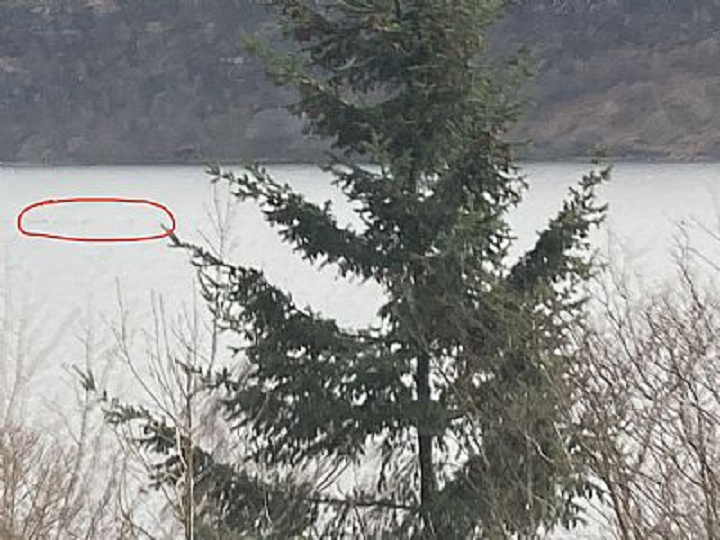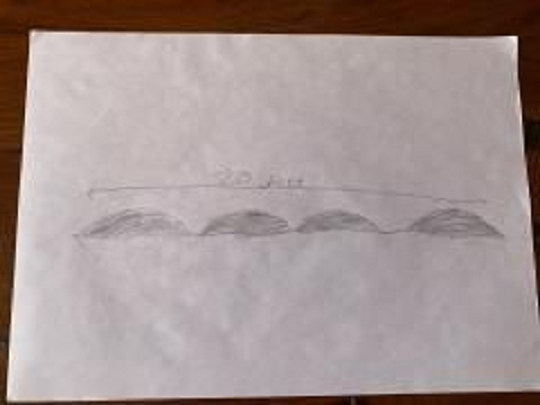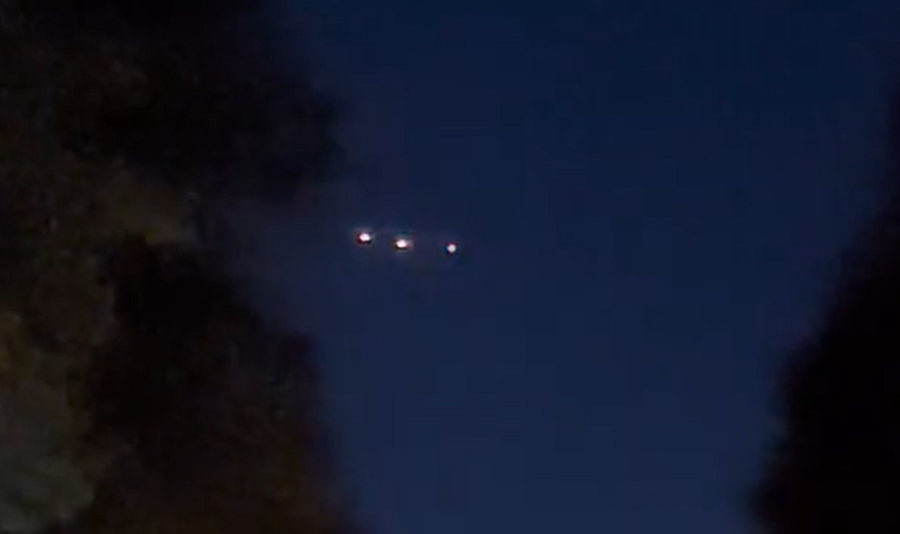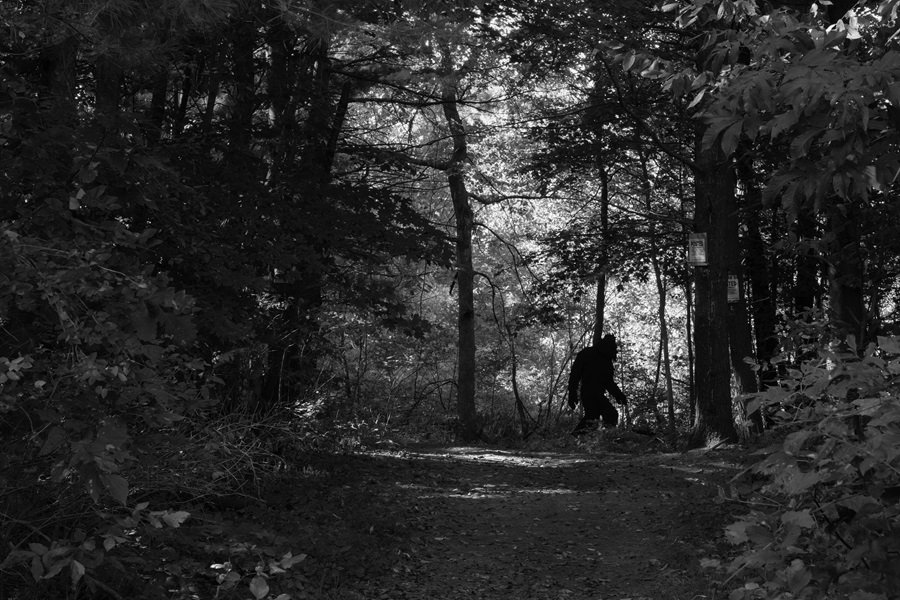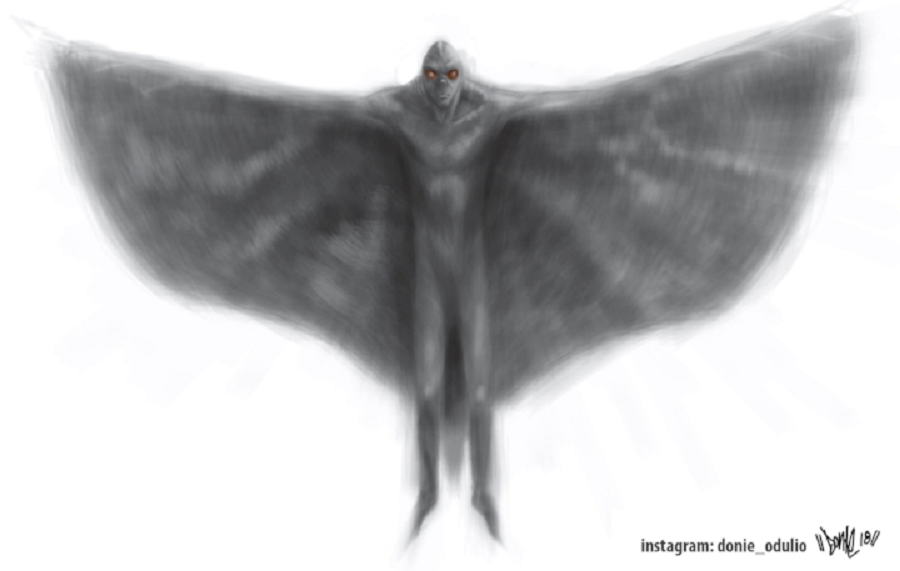First Nessie Sighting of 2023 Reported to The Official Loch Ness Monster Sightings Register
Urquhart Castle overlooking Loch Ness.
The first “official” Loch Ness Monster sighting of the year has been reported.
According to The Official Loch Ness Monster Sightings Register, Francesca McGarvey of Paisley, Scotland, was visiting the loch with her parents on April 5th of this year when she noticed an unusual object in the water at 11:52 a.m.
"She described being in their car [two to three] miles north of Invermoriston, driving south towards Fort Augustus at around 48mph, when she saw a dark shape emerge from the water, travelling north toward Urquhart castle," the report read. "She said there were humps seen, possibly like [the] back of a whale and about the length of two saloon cars—about 20 feet in total. It stayed above [the] surface whilst moving for about 30 seconds. She took a picture and alerted her parents, who tried to find [a] place to stop but couldn’t pull in safely, but her dad also briefly saw it. They confirmed that there was no sign of boat activity in the area."
The photograph taken by McGarvey. (The Official Loch Ness Monster Sightings Register)
Popular skeptical explanations for sightings similar to McGarvey’s include tree limbs and rogue waves.
However, some believe that sightings of Nessie—as the monster is affectionately known—are indicative of a surviving population of plesiosaurs, although more recent scientific study makes that possibility unlikely.
Plesiosaurs, aquatic reptiles who first appeared in the fossil record around 200 million years ago and were thought to have died off 66 million years ago (the same time as the dinosaurs), are a popular explanation for the monster said to inhabit Scotland’s Loch Ness; an explanation first introduced in the 1930s and later popularized by naturalist Sir Peter Scott and zoologist Denys Tucker.
Supporters of the hypothesis point to the long necks of plesiosaurs and postulate that this explains why witnesses sometimes describe seeing a neck-like appendage with a small head attached sticking up out of the water.
In the case of McGarvey’s sighting, they might argue that she had only seen the creature partially surface.
A drawing of the object by McGarvey. (The Official Loch Ness Monster Sightings Register)
However, despite recent findings that suggest plesiosaurs were adapted to tolerate freshwater and might have even spent their entire lives in it, a research project published to the Journal of Vertebrate Paleontology by scientist Paul Scofield showed that plesiosaurs were actually very unlikely to ever lift their heads above the water.
It is much more likely, according to Scofield, that plesiosaurs used their long necks to dredge the seafloor.
"They have these enormous teeth arranged in rows like a grappling iron," he explained. "It has been hypothesized that they floated on the surface and dredged the seafloor blowing the dirt out through their teeth and leaving just the clams. Thus, their feeding method dictates the neck length—it's just like the giraffe but in reverse."
Some believers might argue that this only explains why any plesiosaurs inhabiting Loch Ness aren’t seen with their heads above water more often, but Scofield dismisses any belief in the monster entirely.
"I totally reject the idea that Nessie exists and that it is an elasmosaurus," he said. "Loch Ness monster records are a mixture of fakes and mistakes."
Plesiosaurs have begun to fall out of favor as an explanation for Nessie in recent years, following a 2019 study conducted by Neil Gemmell, a New Zealand scientist and professor at the University of Otago.
Gemmell's study involved gathering water samples from multiple locations and at different depths of the loch to scan for bits of animal DNA, and then working to identify it. The samples were sent to labs in New Zealand, Australia, Denmark, and France which used large sequence databases to compare the DNA found in Loch Ness with the majority of known living things. This was done to help distinguish and identify any potentially unknown genetic material.
The results revealed no evidence of any large animals such as sturgeon, catfish, sharks, or surviving prehistoric plesiosaurs, but they did show an abundance of eel DNA.
Many now point to giant eels as a possible explanation for the monster, although, as of yet, no definitive proof of their existence in the loch has been found.
But cryptozoologist Ken Gerhard has another hypothesis for the Loch Ness Monster.
"Based on thousands of eyewitness descriptions, I’m convinced that Nessie is just one of many such unknown creatures around the globe—Norwegian sea serpents, Champ and Ogopogo here in North America, lake monsters in Scandinavia, Russia, Japan and Argentina, among others—and that these animals represent the very same species, most likely descended from an ancient group of serpentine whales," he told the Ross-shire Journal in 2021.
Some witnesses, like McGarvey, do describe what they’ve seen as having whale-like qualities.
Although the vast majority of whales are found in saltwater, some whales can occasionally be found in freshwater rivers and lakes looking for food.
Supporters of Gerhard’s hypothesis might argue that the relative scarcity of credible evidence for a “monster” in the loch might be because they don’t live there full-time, but rather, only travel there in search of food.
However, there is currently no definitive proof for the existence of whales in Loch Ness, and thus, the sightings remain unexplained.
To report your own encounter with the impossible, reach out to us directly at the Singular Fortean Society through our contact page.
If you enjoyed this article and would like to support the Singular Fortean Society, please consider becoming an official member by signing up through our Patreon page—membership includes a ton of extra content and behind-the-scenes access to the Society’s inner workings.


